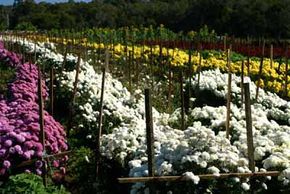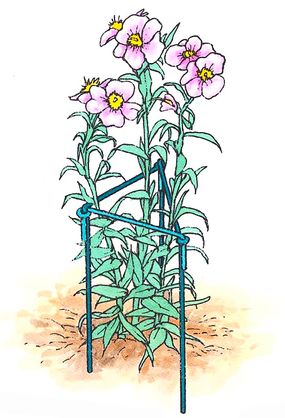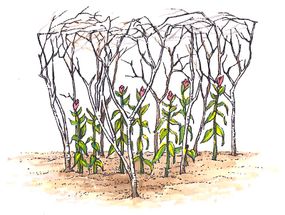Some plants need just a little bit more support than the rest, either because of heavy clusters of flowers, slender stems, or a combination of both element. A few examples of these plants include snapdragons, asters, and zinnias. In order to grow and thrive, these special annuals will need to be staked using one of the various techniques highlighted in this article.
Yes, yes, we know. This sounds like a pain. Don't worry, if you think you don't want to be bothered with a lot of hassle. You're in luck because you have a couple of options: You can choose different plants, because the ones that need to be staked will droop or fall over and die. Or, you can take a few minutes to learn just how easy staking can be. If you're interested in the second option, here's a look at what you'll find in this article:
Advertisement
- Staking Basics Learn helpful tips on the many different ways you can go about staking plants. This includes stake corrals, L-shaped metal staking, brush thicket staking, as well as single staking. There's sure to be a technique that will work best for you and for your plants.Stake corrals are made by wrapping string around the stakes that surround your leaning plant. The heavy plant will then lean against the string for support. If you are staking a tall plant, you may need to run several tiers of string across the corral to give it extra support. Stake corrals are relatively easy to make and are also relatively inexpensive. Another more expensive option are the L-shaped metal stakes, which are designed specifically to provide support to plants. They hook together to make whatever size you need. The good thing is that they can be reused year after year. L-shaped metal stakes are very easy to use.Brush thicket staking, also known as pea staking, relies upon nature to lend some support. All that is required with this staking technique is poking the stems of some of the well-branched brush into the ground next to the delicate plants. The stems will then lean against the brush for support. This technique works even better if the tops of the brush are interwoven.Finally, single staking involves using the stakes and string to provide a sturdy support directly to the stem of the drooping plant. All of the branches of the flower can then be tied to a single stake in the center of the plant. This method involves an intricate weaving of string and knots, but it works well with all kinds of plants.
Lend your plants the support they need by learning more about staking. Staking is an easy method to keep your most favorite annuals standing tall in your garden instead of drooping down in and falling over once they get too big. Trust us, your flowers will thrive, and you'll be glad you could help. Read on to learn the easy methods on the basics of how to stake plants.
Advertisement


